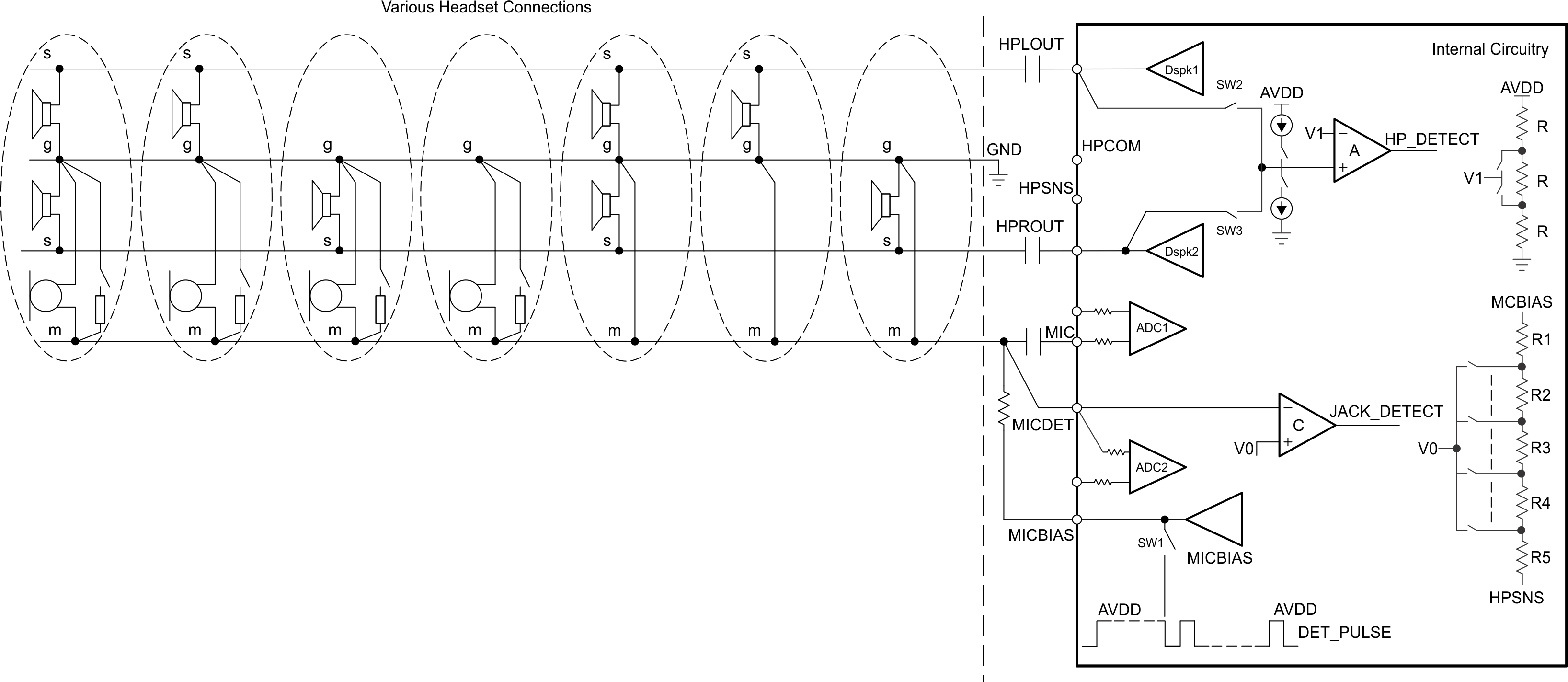SLAAEG7 April 2024 TAC5111 , TAC5111-Q1 , TAC5112 , TAC5112-Q1 , TAC5211 , TAC5212 , TAC5212-Q1 , TAD5112 , TAD5112-Q1 , TAD5212 , TAD5212-Q1
- 1
- Abstract
- Trademarks
- 1Headset Plugs and Connection Diagrams
- 2Example for a Pseudo-Differential (Capacitor-less) Output Configuration
- 3Example for an AC-Coupled (Capacitor) Output Configuration
- 4Flowchart for Pseudo-Differential (Capacitor-less) Output Configuration
- 5Flowchart for AC-Coupled (Capacitor) Output Configuration
- 6Summary
- 7References
1.2.1 Detection Block – Capacitor Interface
 Figure 1-8 Detection Block for AC-Coupled
(Capacitor) Interface
Figure 1-8 Detection Block for AC-Coupled
(Capacitor) InterfaceComparator C is used to detect headset insertion and removal. However, button press detection becomes active only when headset with mic is detected. Headset insertion and removal detection is always active inside device.
| MICDET < V2 | Insertion detected |
| MICDET > V2 | No insertion |
| MICDET > V1 | Headset with mic |
| MICDET < V1 | Headset without mic |
| Given headset with mic is already detected | |
|---|---|
| MICDET > V3 | No button press |
| MICDET < V3 | Button press detected |
Comparator A is used to differentiate mono headset with mic from stereo headset with mic.